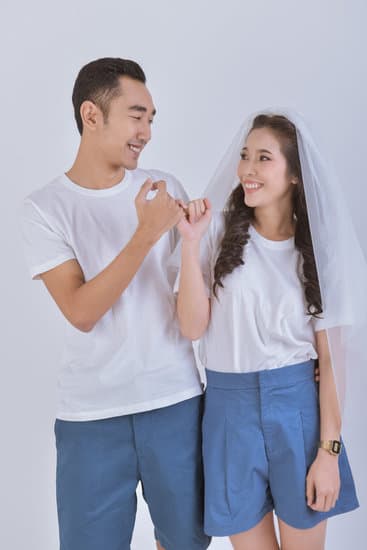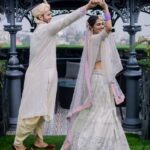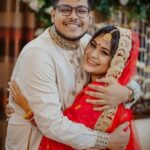Indian weddings are vibrant, extravagant, and rich in culture, making them a truly unique and special experience. One of the most important aspects of attending an Indian wedding is dressing appropriately for the occasion. Understanding the traditions, customs, and dress code etiquette is essential to showing respect for the couple getting married and their families.
The traditional Indian attire for men and women is a beautiful reflection of the country’s rich heritage and diversity. From the elaborate sarees and lehengas to the regal sherwanis and kurtas, each piece of clothing holds significant cultural symbolism. Additionally, specific colors and fabrics play a vital role in Indian wedding attire, adding another layer of meaning to the garments worn during these joyous celebrations.
It’s crucial to understand the dress codes specified on Indian wedding invitations as they often vary according to different events like sangeet, mehendi, wedding day, and reception. Whether opting for traditional or contemporary attire, knowing how to strike the right balance between elegance and cultural sensitivity is key. Understanding these elements will ensure that guests can fully embrace the festivities while honoring Indian traditions respectfully.
Traditional Indian Attire
When it comes to attending an Indian wedding, traditional attire plays a crucial role. For men and women alike, understanding the traditional Indian clothing for each event within the wedding is essential to dressing appropriately. For men, traditional attire includes the sherwani, kurta pajama, and bandhgala, while women opt for the saree, lehenga, or salwar kameez.
For men attending an Indian wedding, the sherwani is a popular choice for the wedding day. This long coat-like garment is typically paired with a fitted churidar or dhoti pants and embroidered mojari shoes. Another option for men is the kurta pajama which consists of a long tunic paired with comfortable bottoms such as pajama pants or dhoti pants.
Additionally, the bandhgala also known as Jodhpuri suit is another traditional choice that exudes elegance and sophistication. Men can further accessorize their ensemble with a turban or dupatta and add statement jewelry such as a brooch or necklace to complete their look.
When it comes to women’s attire for an Indian wedding, there are various options to choose from based on personal style and preference. The saree is a timeless choice that consists of draping six yards of fabric in various elegant styles. Another popular option is the lehenga which features a long skirt paired with a cropped top and dupatta.
The salwar kameez provides comfort and versatility as it includes trousers paired with a tunic and can be styled in numerous ways for different events within the wedding festivities. Women can further enhance their look by incorporating intricate jewelry such as chandelier earrings, statement necklaces, bangles, and rings along with elaborate hairstyling and makeup.
Understanding how to dress for an Indian wedding involves not only selecting the appropriate traditional attire but also paying attention to details such as color choices in line with cultural significance and specified dress codes on wedding invitations. It is important to embrace cultural sensitivity by honoring traditions while avoiding cultural appropriation in attire choices at these special celebrations.
Colors and Fabrics
In Indian culture, colors hold great significance, particularly when it comes to wedding attire. Each color is associated with different meanings and emotions, and it plays a crucial role in the overall aesthetic of an Indian wedding. When it comes to dressing for an Indian wedding, understanding the symbolism of colors can help you choose the appropriate attire for each event.
Significance of Colors
In Indian weddings, red is considered the most auspicious color and is traditionally worn by brides. It symbolizes love, passion, and fertility. Other popular colors for wedding attire include gold, green, blue, and pink, each with its own cultural significance. For example, green represents new beginnings and fertility while gold symbolizes wealth and prosperity. Understanding these meanings can help guests select the right colored attire for various wedding events.
Popular Fabrics
Indian wedding attire is known for its use of luxurious fabrics that add elegance and grandeur to the outfits. Some commonly used fabrics include silk, brocade, georgette, chiffon, and velvet. These fabrics are often embellished with intricate embroidery, beadwork, or zari (metallic thread) to create stunning traditional outfits. Each fabric has its unique drape and texture that complements the overall look of the attire.
When considering how to dress for an Indian wedding, guests should be mindful of both colors and fabrics to ensure they honor the cultural traditions while also looking stylish and appropriate for the occasion. Whether opting for traditional attire or contemporary fusion wear, understanding the symbolism behind colors and choosing quality fabrics will undoubtedly enhance one’s overall experience at an Indian wedding.
Dress Code Etiquette
Understanding the dress code specified on the wedding invitation is crucial when preparing for an Indian wedding. Whether it’s a traditional dress code like “ethnic wear” or a more specific requirement such as “formal attire”, knowing what to wear is essential to show respect for the couple and their cultural traditions. It’s also important to differentiate between traditional and contemporary attire, especially when attending different events within the wedding celebration.
For those who are not familiar with traditional Indian attire, it can be confusing to understand what is appropriate for each event. The sangeet, mehendi, wedding day, and reception all have their own customs and expectations when it comes to dressing. This is where guests may wonder how to dress for an Indian wedding in a way that honors the occasion while also feeling comfortable and confident.
When deciphering the dress code for an Indian wedding, it’s helpful to seek guidance from the couple or close family members if there are any questions about appropriate attire. They can provide insights into specific customs or preferences that should be taken into account when choosing an outfit. Additionally, being open-minded about trying traditional Indian attire can add a meaningful touch to the overall experience of celebrating the couple’s special day in a culturally respectful manner.
For Men
When it comes to dressing for an Indian wedding, men have a variety of traditional attire options to choose from. The most popular choices include the sherwani, kurta pajama, and bandhgala. The sherwani is a long coat-like garment that is paired with either churidar pants or straight-cut trousers.
It is often heavily embroidered and can be customized to suit the groom’s preferences. On the other hand, the kurta pajama consists of a knee-length shirt paired with loose-fitting pants, while the bandhgala is a more structured and formal version of the kurta.
The choice of traditional men’s attire for different wedding events also varies. For example, the Baraat (groom’s procession) and wedding ceremony typically call for more elaborate and ornate outfits such as the sherwani, while lighter attire like the kurta pajama may be suitable for pre-wedding events like the sangeet and mehendi. When selecting traditional Indian attire, it is important for men to consider factors such as comfort, personal style, and adherence to cultural customs.
In addition to choosing the appropriate outfit, men should also pay attention to accessorizing and styling. This may include wearing ethnic footwear such as mojaris or juttis, as well as incorporating cultural accessories like turbans or stoles. Paying attention to these details can enhance the overall look and show respect for Indian traditions in dress. Considering these key elements will ensure that men are dressed appropriately and respectfully for an Indian wedding celebration.
| Traditional Attire | Accessories |
|---|---|
| Sherwani | Turban |
| Kurta Pajama | Stole |
| Bandhgala | Mojaris |
For Women
When attending an Indian wedding, it is essential for women to dress in traditional attire that reflects the rich cultural heritage of India. There are several options for women’s traditional attire for different events within the wedding celebration, such as the sangeet, mehendi, wedding day, and reception. Understanding and choosing the appropriate clothing for each event is crucial to show respect and appreciation for the customs and traditions of Indian weddings.
Saree
The saree is a timeless and elegant choice for women attending an Indian wedding. It consists of a drape that can be styled in various ways, along with a blouse and underskirt. Different regions of India have their own unique styles of draping a saree, each with its own significance and symbolism.
Lehenga
The lehenga is a popular choice for bridesmaids and guests at Indian weddings. This attire features a long skirt paired with a cropped top or blouse, often adorned with intricate embroidery, beads, and sequins. The lehenga choli is known for its vibrant colors and luxurious fabrics.
Salwar Kameez
For those seeking comfort without compromising on style, the salwar kameez is an excellent option. This three-piece outfit includes loose-fitting trousers (salwar), a tunic (kameez), and a matching stole (dupatta). The versatility of the salwar kameez allows women to move gracefully while participating in various wedding rituals.
In addition to selecting the appropriate traditional attire, women must pay attention to jewelry, makeup, and hairstyling when dressing for an Indian wedding. Jewelry plays an essential role in completing the look, with options ranging from statement necklaces to elaborate earrings and bangles. Makeup should enhance natural beauty while complementing the chosen outfit. Hairstyling can vary from elegant updos to cascading curls or braids, depending on personal preference and the type of traditional attire being worn.
Western Influence on Indian Wedding Attire
In recent years, there has been a noticeable influence of Western fashion on Indian wedding attire. This fusion of styles has created a unique blend of traditional and contemporary looks, offering more options for individuals attending Indian weddings.
One significant aspect of the Western influence on Indian wedding attire is the introduction of gowns for women. While the saree and lehenga continue to be popular choices for brides, many have also embraced the idea of wearing elegant gowns for their wedding events. These gowns often feature intricate embroidery and embellishments, combining traditional Indian craftsmanship with modern silhouettes.
For men, the influence of Western fashion can be seen in the styling and tailoring of traditional attire. Many men now opt for Indo-Western fusion outfits such as bandhgalas paired with trousers or dhoti pants. The use of contemporary cuts and fabrics adds a modern touch to classic men’s ensembles, allowing them to express their personal style while maintaining cultural authenticity.
As a result of this fusion, guests attending Indian weddings now have more flexibility in choosing their attire. While traditional clothing remains a respected choice, many individuals are opting for outfits that reflect a blend of both cultures, creating a harmonious balance between Eastern and Western influences.
| Wedding Attire | Influence |
|---|---|
| Gowns (Women) | Combines traditional embroidery with modern silhouettes |
| Indo-Western Fusion (Men) | Mixes contemporary cuts and fabrics with classic ensembles |
Cultural Sensitivity
When attending an Indian wedding, it is crucial to be mindful of cultural sensitivity and to dress appropriately to show respect for the traditions and customs of Indian culture. Understanding the significance of certain attire and colors can help guests make thoughtful choices when selecting their outfits for the various wedding events. Here are some key points to consider when dressing for an Indian wedding:
- Importance of respecting customs: Indian weddings are steeped in tradition and have deep cultural significance. As a guest, it is essential to honor and respect these customs by dressing in traditional Indian attire or attire that aligns with the dress code specified on the wedding invitation.
- Tips on avoiding cultural appropriation: It’s important to avoid appropriating elements of Indian culture when choosing wedding attire. This means being respectful of the symbolism behind certain clothing, jewelry, and accessories. Avoiding caricatures or stereotypes in dress choices is a way to show appreciation for the traditions without crossing any cultural boundaries.
- Showing appreciation for traditions: When selecting an outfit for an Indian wedding, guests should aim to show appreciation for the rich heritage and traditions of India. This can be done by carefully considering traditional attire options or choosing contemporary Western clothing that still pays homage to elements of Indian culture.
By understanding the importance of cultural sensitivity when dressing for an Indian wedding, guests can ensure that their attire is respectful, tasteful, and honors the traditions that make these celebrations so meaningful. Whether opting for traditional Indian clothing or incorporating Western elements into their outfit, showing respect for cultural customs is crucial in creating a harmonious and inclusive atmosphere at the wedding festivities.
Conclusion
In conclusion, dressing for an Indian wedding requires careful consideration and respect for tradition. The attire worn to these special celebrations is not just a matter of personal style, but also a way to show appreciation for the rich cultural heritage of India. By understanding the traditional attire, colors, and fabrics, as well as following dress code etiquette, guests can participate in Indian weddings with grace and honor.
For those wondering how to dress for an Indian wedding, it’s important to remember that traditional Indian attire for men includes options such as the sherwani, kurta pajama, or bandhgala, while women can choose from elegant sarees, lehengas, or salwar kameez. Accessorizing with appropriate jewelry and styling hair and makeup according to tradition adds an extra touch of authenticity to the outfit.
While there may be some Western influence on Indian wedding attire in modern times, it is crucial to approach this influence with cultural sensitivity and avoid any form of cultural appropriation. Ultimately, by demonstrating respect for Indian culture through appropriate dress and conduct at these joyous occasions, guests can fully participate in celebrating love and unity within a vibrant cultural context.
Frequently Asked Questions
What Should a Westerner Wear to an Indian Wedding?
When attending an Indian wedding as a Westerner, it is best to opt for traditional Indian attire such as a saree or a salwar kameez for women, and a kurta pajama or sherwani for men. These outfits show respect for the cultural traditions of the event.
What Is the Best Color to Wear to an Indian Wedding?
The best color to wear to an Indian wedding would be bright and vibrant hues such as red, orange, pink, and gold. These colors not only symbolize joy and celebration but also align with the traditional attire often worn by the bride and other guests.
Do You Wear Black to an Indian Wedding?
It is generally advised not to wear black to an Indian wedding, as black is traditionally associated with mourning and considered inauspicious for such a joyous occasion. It’s best to opt for more festive and colorful attire that respects the cultural significance of the event.

I have been involved in marriages for over 20 years helping couples and singles understand more about them.





